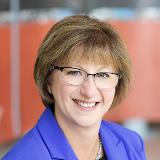Aligning Sustainability Goals, Vocabulary

Not surprisingly, there were two familiar themes that came from the discussions. The first was that suppliers and utilities are in agreement that sustainability is a bottom line business issue. Suppliers and utilities said that if making changes to business practices improves their return on investment, they wouldn't hesitate to do it. The second theme was the need for more consistency around the definition of sustainability. There was unanimous agreement that the overall inconsistency in defining sustainability within a company or an industry makes it challenging to understand the vision or to justify investments without certain payback. (On the flip side, some suppliers said they never would have undertaken changes to reduce water use or improve energy efficiency, for example, if the Alliance hadn't asked about it.)
The suppliers have a good point about the need for clarity. I've heard these same types of complaints with regard to safety performance expectations for contractors. Every utility has different safety standards and requirements for contractors and the lack of a single set of industry expectations is confusing, putting contractors and company employees at risk of harm.
Without clear direction and a business case, how can we set expectations? I believe the Alliance is on the right track with its vision for a sustainable supply chain and much progress has already been made. But based on the feedback from suppliers, there's still a lot of work yet to be done. Not the least of which is to more clearly define what a sustainable supply chain looks like for the electric utility industry.
What are you doing to offer clarity around sustainability for your customers and suppliers? What definition of sustainability do you use?
Related
Sponsored Content
About the Author

Sandy Nessing
Sandy Nessing is the Managing Director of Sustainability and ESH Strategy and Design for American Electric Power Co. Inc. She wrote and published AEP’s first Corporate Sustainability Report in 2007, and in 2010 published AEP’s first integrated Corporate Accountability Report, a combination of the annual sustainability report and Annual Report to Shareholders. Follow her on Twitter at @Watts4U.

